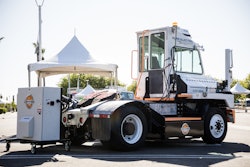Battery-electric vehicles (BEVs) and other alternative fuel trucks are still relatively new to the transportation industry but are growing exponentially. In Q1 of this year, they were up 25% compared to the same period in 2022.
Some experts estimate these vehicles will account for up to 15% of the market by 2030. That is about 605,000 new electric Class 8 trucks on the road in under seven years.
What once seemed like a future novelty is now cruising on local and regional roads.
BEVs and other alternative fuel trucks are changing the way fleets operate, especially when it comes to maintenance. Avoiding the shock of electric trucks requires understanding the market, maintenance modifications, and how to manage many new complexities. Now is the perfect time to get plugged in.
The new technology aboard electric and other alternative fuel trucks requires rewriting almost every maintenance and service procedure to ensure the equipment gets properly serviced. Basic maintenance for the drivetrain and controllers, for instance, is less mechanical and more software-focused. BEVs also involve the maintenance of new electric components such as batteries, motors, high-voltage wiring, E-axles, and Manual Service Disconnect (MSD).
With BEV adoption starting to gain speed, maintenance teams are learning as they go. Standard maintenance schedules such as routine oil changes and brake checks no longer apply. BEVs create different wear and tear on batteries and tires than ICEs, creating new maintenance needs. These requirements must be balanced with other body and chassis components that follow the same maintenance intervals as diesel trucks.
That is a lot for even the industry’s best maintenance teams to learn to manage quickly. For that reason, more fleets are turning to predictive maintenance insights.










